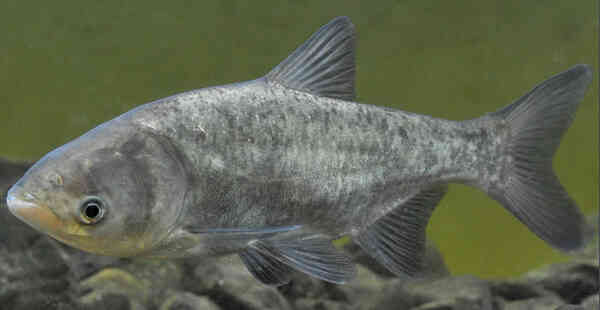It lives in the middle and upper layers of the main streams of rivers, gentle river bays, lakes and reservoirs. Juveniles and immature individuals generally grow in lakes along the river and affiliated water bodies. When they reach sexual maturity, they go to the river to spawn. After spawning, most individuals enter the lakes along the river to feed and fatten. In winter, the water level of the lakes drops, and they return to the deep waters of the rivers to hibernate. In the warm spring of the following year, they go upstream to reproduce. It is a warm-water fish, and the water temperature suitable for its growth is 25-30℃. It can adapt to a more fertile water environment. It has a docile temperament and slow movements. From the fry to the adult stage, it mainly feeds on zooplankton and also feeds on phytoplankton. It is a typical fish that feeds on plankton. Under artificial breeding conditions, it also eats artificial feeds such as bean cakes, rice bran, distiller's grains, and feces of poultry and livestock. The feeding intensity varies with the season. The feeding intensity is relatively high from April to October each year.

Bighead carp lays drifting eggs. Sexual maturity is 4-5 years old, and the youngest male fish is 3 years old. The breeding season is from April to July. The spawning grounds are mostly in places with uneven riverbeds and complex flow patterns. When the basin rains, the water level rises sharply and the flow rate increases, breeding activities are carried out. The longest age is 20 years.
Economy: Bighead carp is one of the important economic fish in the middle and lower reaches of the Yangtze River. It can adapt to the breeding of various water bodies. In artificially stocked lakes, ponds, and reservoirs, bighead carp grows fast, has fewer diseases, and is easier to catch than silver carp. It is the main stocking target in various natural waters.
Edible: Bighead carp has a large and fat head and white and tender meat, which is deeply loved by people. Bighead carp is a high-protein, low-fat, and low-cholesterol fish. In addition, bighead carp also contains nutrients such as vitamin C, vitamin B2, calcium, phosphorus, and iron. Steaming, braising, casserole fish head or cooking miso are all suitable.
Medicinal use: Bighead carp is sweet and warm in nature, non-toxic, and has the effects of warming the stomach, replenishing deficiency, eliminating dizziness, benefiting the brain, helping memory, delaying aging, and moisturizing the skin. People with cough, edema, hepatitis, dizziness, nephritis, urinary problems and physical weakness can all use bighead carp for dietary therapy.